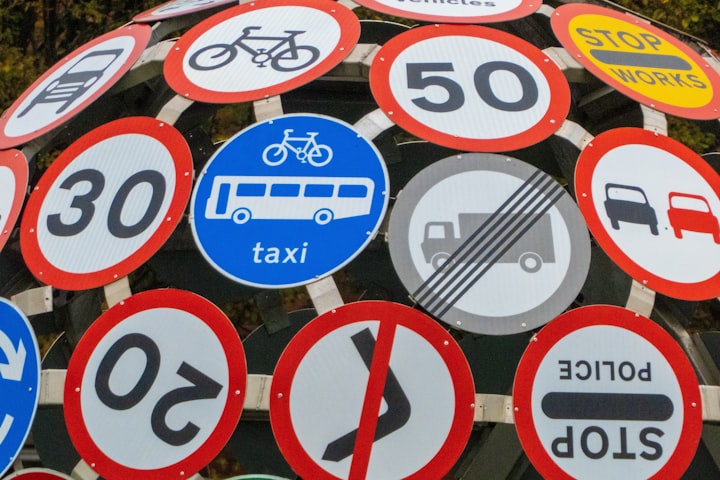What Does the New Highway Code Mean for Road Safety?
A revamped version of the Highway Code came into force earlier this year.

Updates were actioned with the ultimate goal to improve the safety of ‘vulnerable’ road users and make streets across the UK more secure. As fatality rates on our roads are starting to grow for the first time in forty years, this was a much-needed move.
However, following a survey conducted in January, 33% of British drivers were unaware of the changes. The Highway Code applies to anyone using our streets and contains a comprehensive set of guides and rules to promote road safety, so it is important for everyone to familiarise themselves with its recent additions.
Let’s have a look at what improvements have been made and how these changes could impact personal injury claims
New Highway Code rules
The Highway Code has recently been amended to ensure that roads in Scotland, England, and Wales are as secure and accident-free as possible. Many changes have been introduced to safeguard road users deemed the most vulnerable, such as pedestrians, cyclists, and horse riders.
From a driver’s perspective, there are specific new modifications to keep in mind. These can prevent unfortunate consequences for people at the wheel of a vehicle, from a car crash to a painful whiplash injury.
One of the most prominent introductions is the so-called ‘hierarchy of road users’. This ensures that motorists, who can cause the greatest harm in the event of a collision, are given the responsibility to minimise the danger they may pose to other road users. With the new dispositions, drivers of passenger and large goods vehicles are asked to look out for road users who are more likely to sustain severe injuries.
What’s more, recent changes have clarified existing rules on pedestrian priority, both when crossing the street and on pavements. One of the new points states that, at a junction, traffic should always give way to people who are waiting to cross. Drivers must give priority to pedestrians who have moved onto a zebra crossing and should do the same with walkers who are waiting to step onto it.
Other Highway Code amends to make a note of those offering guidance on safe passing distances. Previously, rules simply highlighted drivers could only overtake when safe and legal while making sure to leave enough space from the overtaken vehicle or road user. The revised code goes into more detail about distances. If overtaking a cyclist, motorists should leave a one and a half metres distance when driving at 30mph, and at least two metres when cruising at a higher speed. When overtaking horse riders or horse-drawn vehicles, drivers should reduce their speed to under 10mph and keep a distance of about two metres.
While these are among the more noticeable updates, other introductions are:
• Opening car doors – Drivers are encouraged to open their car doors using the ‘Dutch reach’. This means that motorists should open their vehicle door with their far hand, as this movement allows them to look for any potential oncoming pedestrian or cyclist. By doing so, drivers can actively reduce the chance of opening the door into the path of other road users, preventing avoidable incidents.
• Slow-moving traffic – According to Rule 151, in the event of slow-moving traffic, drivers should always permit both cyclists and pedestrians to cross in front of them.
• Cyclists’ positioning – If travelling by bike, you should always ensure you are fully visible to all motorists and road users. Therefore, cyclists should ride in the centre of lanes in slow-moving traffic, on quiet roads, and when approaching a junction.
• Shared spaces – When more road users are sharing close spaces, cyclists should never overtake horse riders or pedestrians. Equally, pedestrians need to be considerate of other road users and not obstruct paths.
The impact on personal injury claims
Road accidents can have serious consequences, this is why it is crucial to abide by the rules and advice outlined by the Highway Code.
While not a legal document, the Highway Code provides extensive guidance on good practice for all road users, and many instructions are supported by the law. One of the most obvious examples is the condemnation of reckless driving. Anyhow, failure to comply with the Highway Code will not result in fines or prosecution, but it can be used as a baseline to determine liability in a civil claim.
Susanne McGraw, Head of Personal Injuries at Watermans, says that recent updates can further aid those who have been injured following a road incident. “As the new introductions aim to maximise road safety for everyone,” McGraw explains, “these changes offer more protection to persons such as pedestrians and cyclists and should make it easier to prove fault on the part of the vehicle driver.
“Let’s take the example of a pedestrian waiting or attempting to cross the road. If a driver fails to stop in time and ends up injuring them, we can refer to the fact that the driver has failed to adhere to the Highway Code – which has in turn caused the accident – when negotiating with the insurers. This may make for a quicker acceptance of responsibility.
“Ultimately, personal injury lawyers can adopt the new updates and help their clients get the compensation they truly deserve.”
From offering extra protection to road users to clarifying pedestrian priority and safe passing distances, the new Highway Code covers updated tips on how to keep Britain’s streets more secure.
With more transparent rules, victims of road incidents will also receive more protection. When it comes to personal injury claims, the new rules will make it more difficult for drivers to avoid liability, and as a result, victims will be able to obtain compensation in a more timely manner, allowing them to get on with their lives.
Sources
https://www.bbc.co.uk/news/business-59997523
https://www.rac.co.uk/drive/advice/legal/new-highway-code-rules-what-you-need-to-know/
https://www.bbc.co.uk/iplayer/episode/m0013mvc/panorama-britains-killer-roads
https://www.weightmans.com/insights/new-year-new-highway-code/#:~:text=The%20Highway%20Code%20contains%20a%20mixture%20of%20mandatory,in%20evidence%20in%20court%20proceedings%20when%20establishing%20liability.
https://roadsafety.scot/scotlands-road-safety-framework/info_hub/highway-code/
https://www.carwow.co.uk/news/5790/highway-code-changes-new-rules-for-2022
https://www.gov.uk/government/news/the-highway-code-8-changes-you-need-to-know-from-29-january-2022





Comments
There are no comments for this story
Be the first to respond and start the conversation.